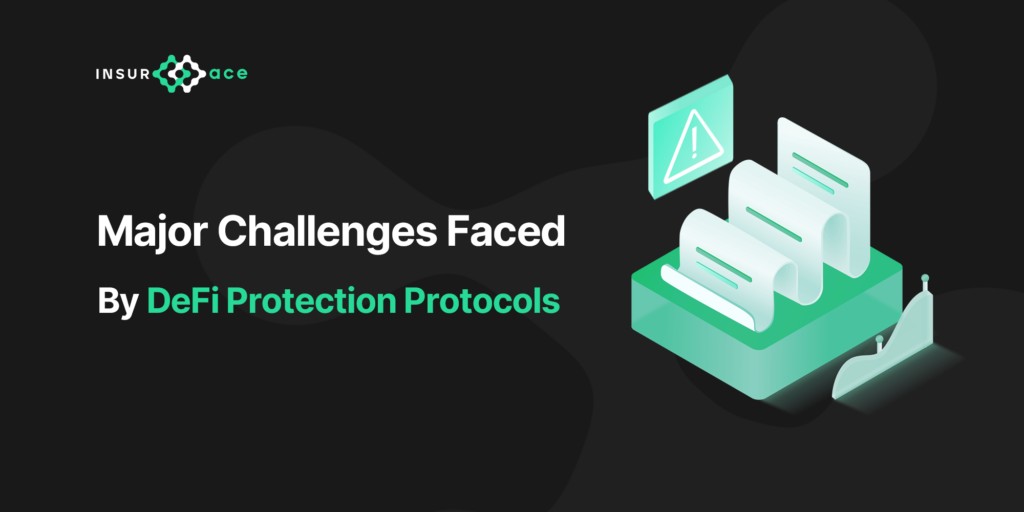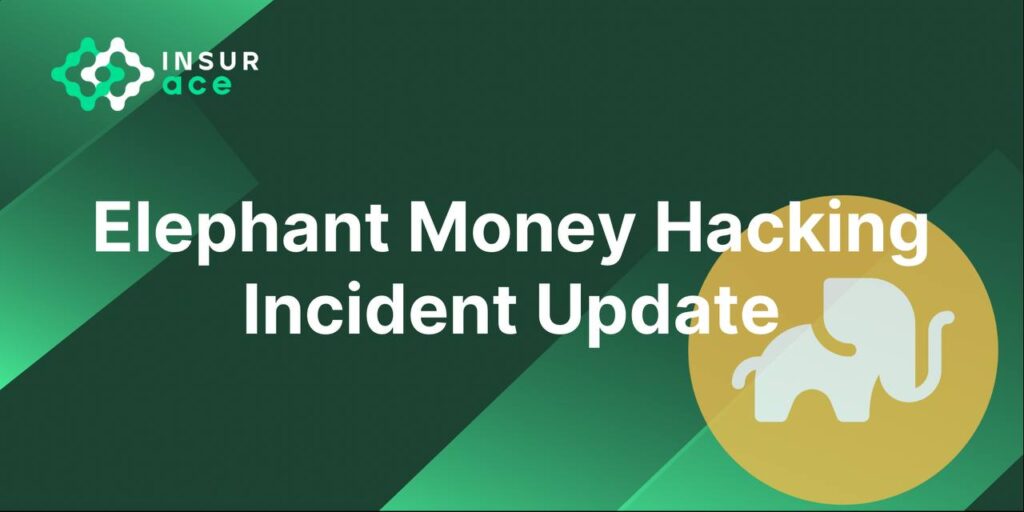Imagine a 1 million man army, with only 20thousand soldiers among them wearing bulletproof armor — that’s the current situation of the Cryptocurrency industry. Studies show that less than 2% of the total Crypto assets Market Capitalization (~$1.1trn) is Covered against unforeseen contingencies like hacks, smart contract exploits and other major risks in Decentralized Finance (DeFi).
Despite the spate of DeFi hacks reaching over $1.9billion worth of digital assets lost to various exploits, and algorithmic Stablecoin De-pegs leading to over $40bn in Investor losses in 2022 alone — the fate of Blockchain Coverage industry still hangs precariously in the balance.
DeFi Protection Protocols are platforms that are set up to protect and indemnify users of various Decentralized Finance services, who may fall victim to Crypto assets theft, Fraud, Hacks and devastating Smart contract failures.
Over the last 2years, various innovative platforms have sprung up to provide technical solutions to this DeFi Coverage debacle. While DeFi Protection & Coverage Protocols are set up to provide coverage to protect users from various specialized risks, DeFi protection protocols themselves are inherently exposed to certain challenges that are peculiar to the Decentralized Finance industry. And these challenges prevented them from offering optimal solutions to Digital assets users & investors globally.
TL:DR
- DeFi hacks and Stablecoin De-Pegs are two of the greatest risks faced by DeFi users globally.
- Over $1.9billion and $40billion worth of digital assets have been lost to DeFi hacks and Stablecoin De-peg respectively, in 2022.
- Despite these visible risks, less than 2% of on-chain assets in the Cryptocurrency Industry have Active Coverage.
- Some of the Major challenges faced by DeFi Protection & Coverage Protocols are Capital Accumulation, Risk Management, Multi-Chain limitations and User Apathy.
- The InsurAce team has deployed innovative solutions to tackle these problems.
In this article, we will outline the 4 major challenges that are faced by the players in the DeFi Coverage & Protection Industry. As well as the unique solutions that InsurAce has deployed to tackle them. Let’s get right into it.
1. Capital Accumulation & Retention:
The main challenge faced by DeFi protection protocols is the ability to accumulate a substantial Capital pool which will then be used to provide payouts on listed Covered products. This can pose a huge challenge, as Fund providers expect to earn substantial returns on their assets.
Generally there are two major avenues for a DeFi Coverage Protocol to raise Capital — fundraising from Venture Capitalist, & Token Issuance.
Since the global financial markets took a dramatic Bearish turn back in May 2022, fundraising in both the TradFi & DeFi markets has slowed down significantly, creating a major problem for DeFi Protection protocols, not only in terms of fundraising, but also retaining capital in downtrodden market conditions.
InsurAce Solution — $INSUR Token
Generally, DeFi protection protocols therefore face a tradeoff between, retaining capital on the platform, and encouraging investors to keep their assets staked for longer periods.
To encourage Capital accumulation retention, the Insurace team has designed an INSUR Utility Token. Asides from its primary yield-bearing attributes, the INSUR token has multiple use cases, such as Voting rights, special Community access, in addition to Staking privileges all of which provide immense value to holders.
Even in the toughest market conditions, investors have been able to earn sustainable yield on their tokens, while also enjoying other valuable utility. This has allowed InsurAce to retain capital on the platform.
2. Risk Management
For DeFi protocols, Risk management refers to the various strategies put in place to ensure that there is the right dynamic balance between Cover products sold and the available Capital Pool capacity on the platform. Capital Management Standards are typically highlighted by key metrics such as: Total Value Covered & Total Value Locked on each protocol.
A protocol that is unable to find the right balance may run into problems such as Insolvency. I.e. inability to make obligated Payouts when a risk crystallizes.
InsurAce Solution — Solvency Capital Requirement (SCR)
The InsurAce team has come up with a standardized risk management strategy, enshrined in the Solvency Capital Requirement model.
The SCR stipulates the amount of funds that platform is required to hold to ensure that the protocol is always able to meet its obligations to cover policyholders over the next 12 months with a 99.5% probability.
At a 0.05% error margin, the SCR factor allows the InsurAce to significantly reduce the possibility of insolvency to less than once in 200 cases. The battle-tested SCR came into play, firsthand in May 2022, during the TerraUST de-peg event, where InsurAce was able to successfully payout ~$12m to 155 victims.
3. Multi-Chain Limitations
Another key challenge that DeFi Protection protocols often face is how to offer Multi-chain solutions to users. Most users of Decentralized finance services, often make use of different protocols, and hold Crypto assets that are hosted across separate blockchain networks. And for them to be able to access adequate coverage for those assets, DeFi protocols have to provide a Coverage platform that is interoperable with those networks. And this creates a major conundrum as it takes a lot of resources and technical nous to be able to offer secure and accessible multi-chain DeFi Coverage services.
InsurAce Solutions
– Launch on Multiple Chains
InsurAce has taken a two-pronged approach to ensure that all loose ends are tied in terms of offering Multi-chain coverage solutions. Firstly, InsurAce has successfully launched cover products on several prominent blockchain networks. Currently popular EVM-compatible chains like Polygon, Solana, BNBChain, & Ethereum are all covered. While EVM-chains currently host 96% of all dApps globally, the InsurAce team has outlined plans to extend its premium coverage services to more platforms in the near future. This is to ensure that no DeFi users are alienated from accessing protection for their services.
– InsurAce in-house Token Bridge
Like every other DeFi platform, DeFi Protection protocols also face the grim challenges presented by the infamous blockchain trilemma. In search of scalable and secure DeFi experience, Cover product buyers/users often have to make use of blockchain Bridges to move their assets around as they seek protection. Since hackers are known to target external bridges as one to the key points of vulnerability in the global Blockchain infrastructure – the InsurAce team has built a native token bridge, primarily to mitigate these risks and pave the way to a safe and sound Coverage ecosystem.
The InsurAce Token Bridge, facilitates the interoperability of the ecosystem, by allowing users to transfer $INSUR tokens across the various EVM-based networks, i.e. Ethereum, BNB Smart Chain, Polygon and Avalanche network.
With a native bridge, InsurAce is now able to provide:
- Sophisticated Security
- In-house user support and ecosystem maintenance
- Improved Liquidity & Efficient Capital Utilization
- Enhanced User experience.
Click here to learn more about how to use the InsurAce Token bridge.
4. User Apathy
One of the greatest challenges faced by DeFi protection protocols is the lack of enthusiasm on the part of DeFi users. Despite the huge risks as depicted by billions of dollars worth of Digital assets lost to DeFi hacks & Crypto-asset thefts on various prominent DeFi protocols, many users are still unwilling to purchase coverage for their crypto assets.
InsurAce Solutions – Stakeholder Sensitization & Increased Product Offerings.
Primarily, the idea of seeking protection against unforeseen unfortunate events is a pretty hardsell – without the regulatory and legal framework to nudge and/or compel people to purchase coverage. But in DeFi, user apathy is further exacerbated by two factors — lack of awareness and the dearth in quantity of coverage products available.
To reverse this trend, the InsurAce team has committed to various media engagements, publishing educational content, and appearing at high-profile blockchain events around the world to sensitize users, investors and other stakeholders about the importance of DeFi Coverage.
InsurAce Chief Marketing Officer (CMO), Dan Thompson (2nd from Right) at DevConnect for the #ETHAmsterdam week in April 2022 — one of the largest crypto conferences in the world.
Likewise the team has also launched a series of new custom Coverage products with dynamic premium pricing, as well as expanding the capacity of existing products.
These unique interventions will enable InsurAce to extend broader Coverage services to a larger number of DeFi users across the world and ultimately lead to the expansion of the DeFi Coverage industry at large.


